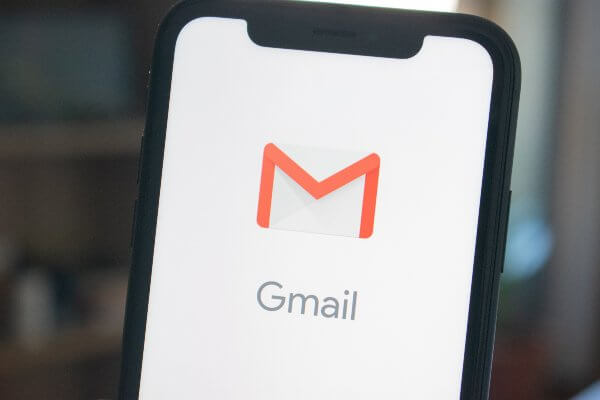What Is Permission Marketing and What Are The Benefits?
The term permission marketing that we often find in email marketing but in other digital marketing applications came about in 1999 to describe a new way for brands to send advertising, information, or promotional details to people as long as they accept it. The user can be the customer or not the firm, but we can be sure that it’s a potential customer that accepted the conditions stipulated before receiving the information.
The question of consent is what makes the difference. It is increasingly crucial when we talk about permission marketing or permission-based marketing: a user agrees to receive information because there is an inclination that leads to them feeling open to wanting to consume. At the very least, it’s this way in any initial approach, that we call the opt-out to opt-in step.
The idea started to gain traction in the traditional marketing space after brands bombarded consumers with promotional messaging, motivating them to switch to using different techniques to get their permission to receive promotional messaging while improving the digital customer experience. We can see it in both the offline and online spheres, which is even more prevalent in online channels. The techniques have varied, and creativity has played a pivotal role in how brands seek to get permission for email marketing and other tactics. While the goal is to create enough value to attract users directly, the ideas to acquire users’ attention and intentions have developed into indirect or permission marketing.
Plus, permission email marketing is more imperative than ever since the arrival of the European Union General Data Protection Regulation, GDPR, the European Union regulation that requires users to give express consent before ceding their personal information on the Internet.
In the United States, the state of California recently passed the California Consumer Privacy Act (CCPA) and began enforcement on July 1st, 2020, and offers similar protections. While the CCPA is a step in the right direction toward providing California residents with similar protections to what GDPR grants European consumers, the consumer watchdog California Privacy Rights Act (CPRA) may be on the ballot during the upcoming elections in November. Still, the state legislature could decide to vote on the legislation instead.
The benefits of permission marketing
In case you’re still wondering why you should pursue permission marketing in your email initiatives, here are some compelling reasons:
-
We’ll stop being intrusive, attacking consumers, and/or hindering their daily lives and moving towards a strategy that aims to grab their attention by attracting and convincing them through bidirectional communications. We do have to be careful because not being intrusive implies we can’t saturate. If we have users’ permission to receive information, we shouldn’t fall into the trap of impacting them the most number of times possible.
-
Users are waiting to collect information. This approach ensures we’ve gained their attention and are in their top-of-mind as a brand in our chosen category. Our best strategy is to maintain this active point and even improve it so that not only we’re in their minds but also get them to become a brand evangelist and talk about us to their friends and acquaintances.
-
We can store more information and segment our database, allowing us to have more orderly valuable information. A list of contacts or email addresses is a gold mine and is easier to exploit if we’ve appropriately segmented it.
-
Through active conversation, we should have the ability to improve our messaging since we have even more information about our users. These insights allow us to provide more compelling content that’s personalized to each one to ensure they buy, contact us, or request a quote.
Permission Marketing resembles Inbound Marketing, making them compatible, if not to say inseparable. We can see the Inbound Marketing methodology represented in some of the pillars of permission marketing. For example, we have an “awareness” stage where they get to know us, “attract” where we grab their attention, and then the point where they convert.

This tactic, based in one-to-one marketing, distances itself from mass marketing and instead opts for segmentation and personalization fundamental in today’s marketing and that of the future. As Seth Godin said, “Don’t find customers from your products. Find products for your customers.”
How to be one of the companies that use permission marketing
-
Evaluate your product and ask yourself if we have enough of a value proposition and power as a brand to attract a user.
-
Next, we have to gain permission or acceptance from a prospective customer to receive advertising, information, or any other communication they let us give them.
-
Segment users and have an optimized database. Like with any email marketing, segmentation is key to sending the right information to the right person.
-
Prepare specific, well-defined content for every user to send the correct information to the person we’re looking for while improving the conversion rates and efficacy in every campaign.
-
Start to communicate with two goals:
-
Create a dialogue that goes in both directions
-
Convince
-
-
Make a sale, give a quote, request, etc.
According to the type of product or service, we may have to make a more considerable effort to gain the user’s trust. That’s why it’s critical we come up with the perfect content for each one at the right time, making the task of lead nurturing imperative.
Seth Godin’s 1999 book, Permission Marketing, summarizes all these keys while highlighting the importance of not carrying out actions that bother or interrupt consumers if they don’t voluntarily accept them because they’re to their liking.
Examples of Permission Marketing
We can easily find permission marketing examples if we observe our behavior on the Internet. When we go on social media or follow a company from our Facebook profile, we’re giving the brand permission to show us their content. When you subscribe to a YouTube channel, you receive alerts every time the channel publishes new content.

Opt-in campaigns are the clearest example of permission-based email marketing rules. These campaigns consist of offering a formula for users to signal they want to receive information (newsletter, promotions, offers, informational emails) from the brand, product, or service in question. You’ll generally find them on some part of a website with clear CTAs like “Subscribe here” or “Join our mailing list to learn more about our offers.” They point out what we’re accepting so brands don’t fall into mistakes or traps that could lead to unsubscribes, spam, reports, or even violations for not complying with the European Data Protection Regulation or if you’re operating in California, the CCPA.
Permission Marketing is a technique that provides personalized, relevant content to our customers that looks for the information they requested from us. It’s an eminently digital method that nurtures itself with the conveniences the Internet offers us to interact with our audience. Permission Marketing lets you stand out among the crowd of advertising impacts with a message that’s your own that fits like a glove on the user that needs it.
Subscribe to our newsletter and stay up to date with the latest digital trends.
Subscribe to our newsletter and stay up to date with the latest digital trends.
No thanks. My inbox is fine as it is.